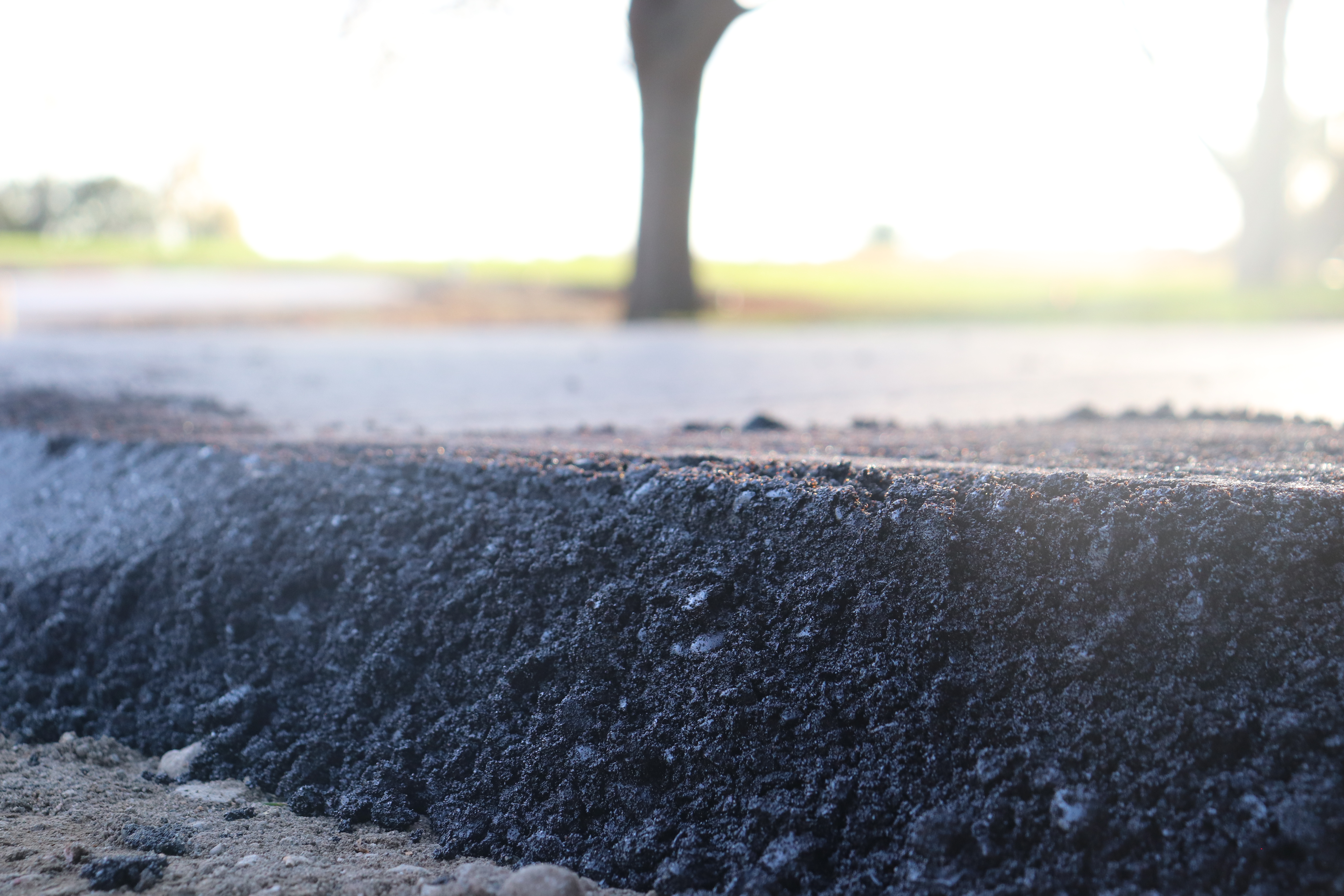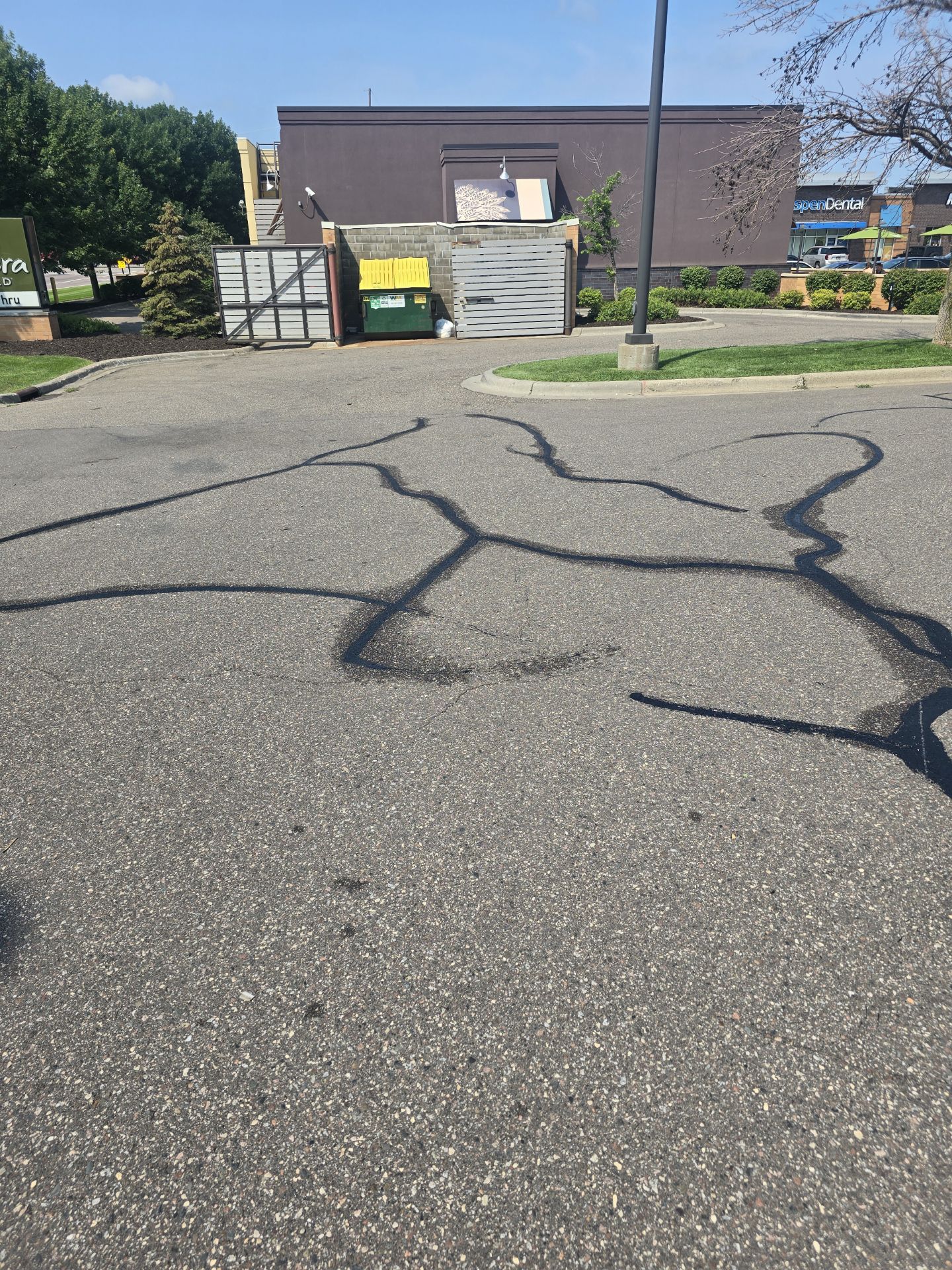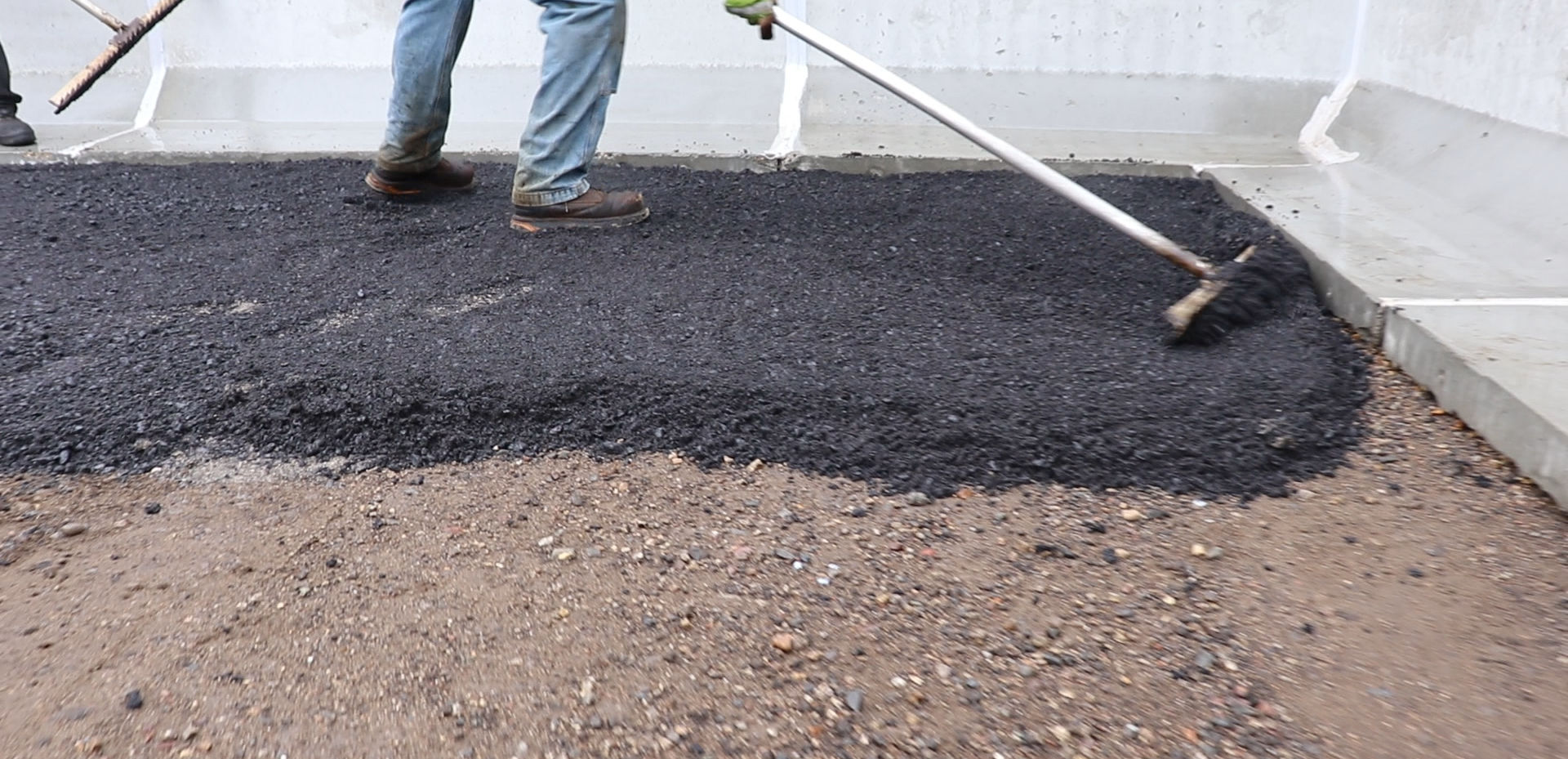Asphalt Care & Maintenance
Protect Your Investment
Proper asphalt care is essential to maximizing the lifespan and appearance of your pavement. Whether you need professional maintenance services or want to learn how to care for your new asphalt, we're here to help. Our comprehensive approach combines expert repair services with valuable guidance on preserving your asphalt for years to come.
Our Asphalt Care Services
Professional maintenance to keep your asphalt and concrete in top condition

Patching & Repairs
Patching services address potholes, depressions, and other damaged areas by removing weakened asphalt and replacing it with new material. This process restores surface strength, improves drainage, and creates a smooth, durable finish that blends with the existing pavement.
Commercial Crack Filling
Prevent water infiltration and extend pavement life by sealing cracks before they spread. Our hot-pour rubberized sealant flexes with temperature changes and provides long-lasting protection against the elements.


Striping & Marking
Maintain appeal and parking organization with professional striping. Fresh bright markings improve safety, maximize space utilization, and enhance your property's professional appearance.
Sealcoating Refferal
We do not provide in house seal coating service. We do provide refferals to our top trusted seal coating services.

Asphalt Care Guide
Essential steps to ensure your new asphalt reaches its full potential in Minnesota
Initial Installation Period
New asphalt needs time to cool. You may walk on it once the crew has left preferabbly with closed shoes, but keep vehicles off for one week and avoid parking for two weeks. This allows the surface to harden properly and prevents tire marks or deformation. The asphalt will lighten from black to gray as it cures.
The First Week
After the first week, light driving is acceptable, but avoid sharp or stationary turns that can stretch the surface of the asphalt. Continue to avoid parking and limit turning as much as possible. Keep into consideration, hot summer days which would reheat the surface of the asphalt. A water hose to the surface will help cool the surface before you continue driving.
First 30 Days
After roughly 2 weeks, parking is permitted, but remain mindful of weather conditions. Hot temperatures can still soften the asphalt, so avoid leaving heavy vehicles, trailers, or RVs parked for long periods. Distribute weight using boards or pads under tires, jacks, or furniture legs to prevent surface impressions and uneven settling.
Ongoing Maintenance
For ongoing care, avoid spilling gas, diesel, transmission fluid, or other automotive chemicals. They dissolve the asphalt’s binding oils causing soft spots or cracking. Minnesota’s freeze and thaw cycles and seasonal extremes naturally will lead to surface cracks over time. Some years are harder on asphalt than others. These weather related cracks are expected maintenance, not a warranty issue, and they should be sealed as needed to extend pavement life.
Seasonal Considerations
In hot weather, asphalt remains more pliable and can be marked more easily by vehicles or heavy objects. Use water to cool off the surface of the asphalt to allow proper curing.
Long-Term Care
Inspect your asphalt regularly for cracks or damage. Address small issues promptly to prevent them from becoming major problems. Plan for sealcoating every 2-3 years and crack sealing as needed. If grass or weeds appear, use week killer products and or pull the weeds from under the asphalt
Quick Tips for Asphalt Longevity
- Keep the surface clean and free of large debris
- Remove oil, gas, and chemical spills immediately
- Crackfill promptly to prevent water infiltration
- Sealcoat every 2-3 years for maximum protection
- Avoid sharp objects and heavy point loads
- Use caution with snow removal equipment
Frequently Asked Questions
These answers provide general guidance for common asphalt care questions. Every project is unique, and specific recommendations may vary based on your situation, weather conditions, and project scope.
When is my job going to get done?
+Project timelines vary based on season, weather conditions, project size, and our current schedule. We provide estimated timeframes during the estimate process and keep you updated as your project approaches. Weather-dependent work may require flexibility.
How long until I can drive on it?
+You can typically walk on new asphalt immediately after installation, but vehicles should stay off for at least one week. Avoid parking for two weeks to prevent tire marks and surface damage while the asphalt cures.
How long will the process take?
+Installation time depends on project size and complexity. Most residential driveways can be completed in 1-2 days, while larger commercial projects may take longer. We'll provide a specific timeline during your consultation.
What happens when a delivery truck marks up my driveway?
+For extreme cases we provide repairs to large deformations from deleivery trucks for a small cost. For DIY or small portions it is a matter of reheating the area and using a board or flat surface to smoothen the deformation.
Can I drive off the edge of the asphalt?
+Driving off the edge of your asphalt can cause crumbling and edge damage over time. The edges are particularly vulnerable without proper support. We recommend staying within the paved area until back-fill or support for the edge of the asphalt is in place
What do I do when grass or weeds grow through the asphalt?
+Remove the growth and burn the roots then seal the cracks promptly to prevent further damage. Regular maintenance and crack sealing help prevent vegetation from taking root.
When and how often do I seal coat the driveway?
+Wait atleast 1-2 years after installation before the first sealcoat to allow proper curing. After that, sealcoating is recommended every 3-4 years provides optimal protection against weather, UV damage, and wear, extending your asphalt's lifespan significantly.
What makes Omann Brothers stand out over others?
+With over 50 years of experience serving Minnesota, we combine quality craftsmanship, and fair pricing. Our family-owned business prioritizes customer satisfaction, and stands behind our work with expertise you can trust.
Still got more questions?
Contact Us